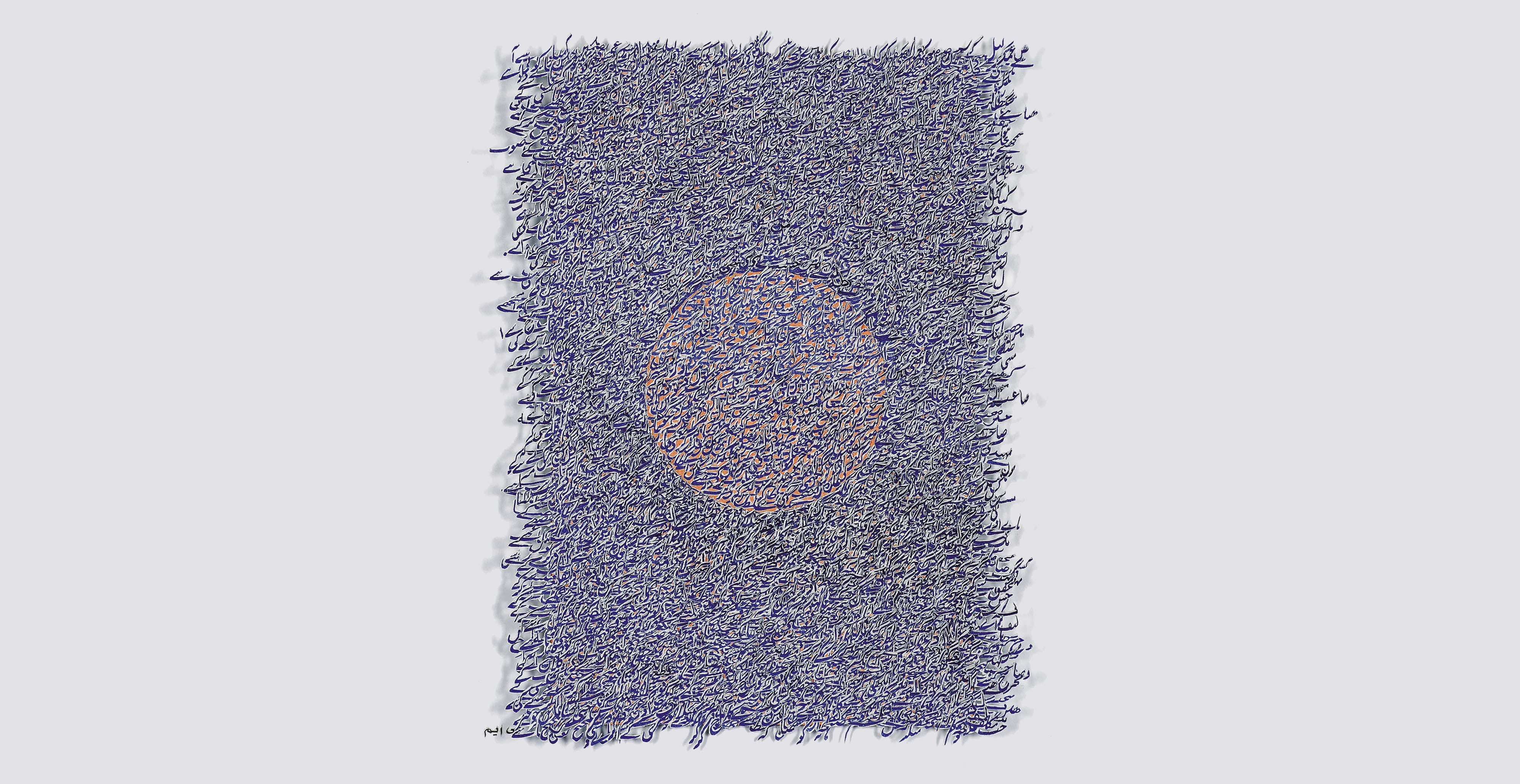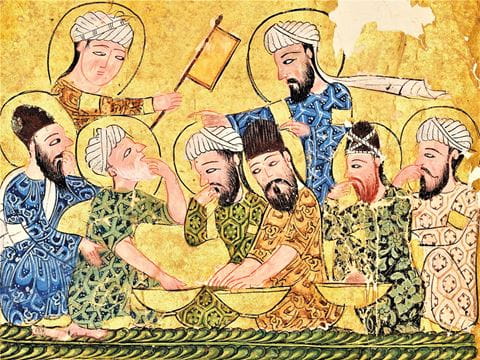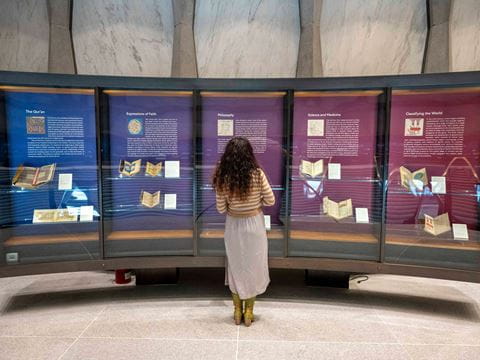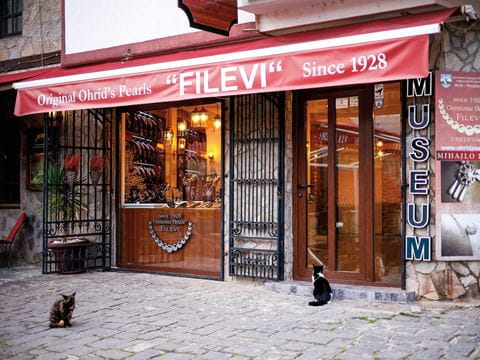
More Than One Story: The Jameel Prize
Open to artists of any background and awarded in June for the fourth time, the biennial Jameel Prize recognizes contemporary art and design inspired by Islamic tradition, encouraging what one judge calls the “alternative modernities” that are “happening everywhere.”
We live in times when culture matters, it seems, more than ever. Civilizations come and go, but what remains is their art, architecture and literature—their heritage. As a farsighted and increasingly influential award for today’s art and design, the Jameel Prize is encouraging creativity that celebrates the heritage of our times, counterbalancing news of conflicts with other stories, tales that draw on art’s universal themes of beauty, exploration and transformation.
Every two years, the Jameel Prize is awarded for contemporary art and design inspired by Islamic tradition, encouraging artists to explore how long-established practices of Islamic art, craft and design can powerfully inform modern expressions. In doing so, the prize promotes dialogue about the role of Islamic culture in an era of sweeping change both in historically Islamic regions and beyond.

First awarded in 2009, the Jameel Prize was founded as a cross-cultural partnership between Art Jameel, an arts and culture initiative in Jiddah, Saudi Arabia, and the Victoria and Albert Museum v&a. in London, which also exhibits traditional and contemporary art. This year was the first time the prize was announced and the art of the finalists shown in an exhibition away from the v&a. This helps “widen public appreciation of the role played by Islam’s great cultural heritage as a source for our own times,” emphasizes Fady Jameel, president of Community Jameel International, a social-enterprise organization with projects in Saudi Arabia and around the world, including the Jameel Prize. He adds that rich and varied Islamic traditions are shared by more than a billion people across a huge area from Africa to Indonesia, and many more countries around the globe.



Collage on wasli paper
9x14 cm

Collage on wasli paper
9x14 cm

Collage on wasli paper
9x14 cm
The prize’s exhibitions have attracted international viewer attention, too, touring venues as diverse as San Antonio, Singapore, Moscow and Morocco. The inaugural prize exhibit, in 2009, traveled to six cities in the Middle East and North America, and the 2011 show toured four venues in France, Spain and the us.
Mohammed, who graduated just three years ago from Lahore’s Beaconhouse National University, is the first Pakistani artist to win the prize. Born in a remote village in Balochistan, he won a scholarship to Beaconhouse. “It was a miracle,” says Mohammed, who studied international contemporary art as well as Mughal miniature painting and calligraphy, all of which influenced his own work.
To create his art, Mohammad visits antiquarian bookshops in Lahore, where he buys texts in Urdu (the dominant language of Pakistan) and uses them to create three-dimensional artworks. Using a process that can take two to three months for each work, he cuts out individual letters, pastes them in layers onto handmade wasli paper, and sometimes embellishes them with gold and silver leaf. It’s intense, concentrated work with results no larger than an average hand.
“If you create miniatures with tiny details, you have to be cool, calm and patient, breathing deeply,” says Mohammed. “It’s a kind of meditation, in which the process is very important. It’s cathartic, and I feel very relaxed.”
–Hammad Nasar
The Jameel Prize 4 panel of six judges was headed by the director of the v&a, Martin Roth, who praises Mohammed for his “excellence of concept and execution.” He says he is happy the prize has been won “by such a promisıng young artist at the beginning of his career. The award has always been thoroughly international in character, open to artists and designers of any nationality or creed, whose work is inspired by Islamic cultural tradition.”
The Jameel Prize is “the work of many hands,” comments Tim Stanley, senior curator for the v&a’s Middle Eastern Collection, who was responsible for developing the award and for curating all four editions. “It has drawn on the knowledge, wisdom and generosity of our network of nominators as well as our judges. It has grown, too, through the willingness of hundreds of talented artists and designers to participate. As a result, the prize can now be seen as an informal commonwealth of practitioners and commentators on their work.”
The 2016 shortlist included “not … just a diversity of practices from sound to film to minimalist sculptures, but also evidence of a growing confidence in the artists, many with strong reputations in the global art world, to assert their multiple identities—both contemporary and rooted in Muslim cultures,” notes Hammad Nasar, one of the judges and head of Research & Programs at Asia Art Archives in Hong Kong. “This is a welcome development, and it suggests that plat-forms such as the Jameel Prize can contribute to expanding our collective ideas of what global visual culture looks like.”

Equal in value to the influential Turner Prize for contemporary art, the Jameel Prize is certainly worth winning, but like other art awards, the value is not just financial. Because of its two-year international touring agenda, the prize ensures global exposure and prestige that translate into further opportunities for creative commissions, exhibitions and recognition.
Mahnaz Fancy, editor of Dubai-based Canvas magazine, calls the partnership between Art Jameel and the v&a a “cultural diplomacy mission.” The award “serves as a platform for negotiating stubborn cultural polarization between the so-called Western and Islamic worlds,” she says.

Roth agrees, calling the prize “a comment space for everyone, a safe environment, supported by an intellectual, academic framework. Artists can hold a mirror to themselves, asking questions in a neutral space.”
The scope of the Jameel Prize makes it unique, and defining its artistic parameters was a challenge, says Venetia Porter, curator of Islamic and contemporary Middle East art at the British Museum, who collaborated with Stanley to initiate the prize. “As scholars of Islamic arts, we clearly understood the complexities of this term ‘Islam.’ Should one, could one talk about a ‘contemporary Islamic art’? This [dilemma] became even clearer when the criteria for selection began to be formulated.”
In the end, the prescription for prize entries called for a clear link with “traditional practices of Islamic art and craft,” referring to “objects, ceramics, textiles, carpets, metal-work, glass, woodwork as well as architecture … created from the seventh to the 19th century in countries that were at any time under predominately Muslim rule.”
– Rose Issa
“Right from the beginning, we didn’t call the [submitted] work ‘Islamic art’—it’s not about that,” explains Stanley. “Some artists are from Islamic countries but aren’t Muslim. For the first prize, we had a Jain, an Armenian jeweler from Istanbul and an Orthodox artist from Lebanon.”
For the 2016 prize, British-born artist David Chalmers Alesworth, who lived immersed in the culture of Pakistan for more than 20 years, submitted “garden carpets,” re-embroidering carpets of Baluchi and Iranian origin. Lucia Koch from Brazil offered what she called “architectural interventions” created with screens that characterized Brazilian homes from the 16th century when Portuguese settlers brought Islamic traditions with them to the New World.
The diversity of this year’s shortlisted entrants also frequently reflects social and political concerns, such as work by CANAN, an artist whose work is informed by her position as one of the leading defenders of women’s rights in Turkey: Using the visual language of Ottoman miniatures in photography, performance and textiles, she entered a painting titled “Resistance on Istiklal Street.” Iranian artist Sahand Hesamiyan takes elemental Islamic geometric and architectonic forms and transforms them into steel sculptures such as “Nail,” which alludes to the Crucifixion.
As its legacy, the Jameel Prize is already providing “a much-needed contextual dimension and bridge across the divide between the Islamic craft heritage and contemporary practice, [and] it actually complements the rapid development of contemporary art from the region,” Fancy writes. On tour the prize gives emerging and mid-career artists an international audience, as some 172,000 people attended the first three prize exhibitions. This year, for the first time, prize organizers have produced a comprehensive catalogue featuring essays by both shortlisted artists and designers as well as academic contributors.



By engaging in media such as carpets, metalwork and inlaid marquetry, for example, today’s artists give work to traditional craftspeople, encouraging the survival and evolution of those skills. Indeed, the 2013 prize highlighted fashion when the Turkish label Dice Kayek drew on Ottoman sartorial style for its winning entry, “Istanbul Contrast.”
With this inclusive approach, the Jameel Prize, says Venetia Porter of the British Museum, “stands as a testament to artists and designers who, in a myriad of subtle ways, encourage us to look at the world from another angle — a place where politics take second place to human aspiration and creativity.” A place where always there is more than one story.
You may also be interested in...

Smorgasbords of Andalusi and Mahgribi Dishes, a Conversation With Food Historian and Author Nawal Nasrallah
Arts
In Smorgasbords of Andalusi and Mahgribi Dishes, Arab food historian Nawal Nasrallah breathes new life into an anonymously compiled 13th-century cookbook.
Mundane to Magnificent: Yale Manuscript Exhibition Illuminates Muslim Knowledge
Arts
Manuscript exhibition reveals handwritten treasures spanning centuries and nations, in graying script and glorious technicolor, on ancient papyrus and gold-coated paper.
Family Secret: The Mystery of North Macedonia’s Ohrid Pearls
Arts
Artisans are preserving the elusive technique behind these pearls—handmade from a fish, not an oyster—in a town of Slavic, Byzantine and Ottomon influences.